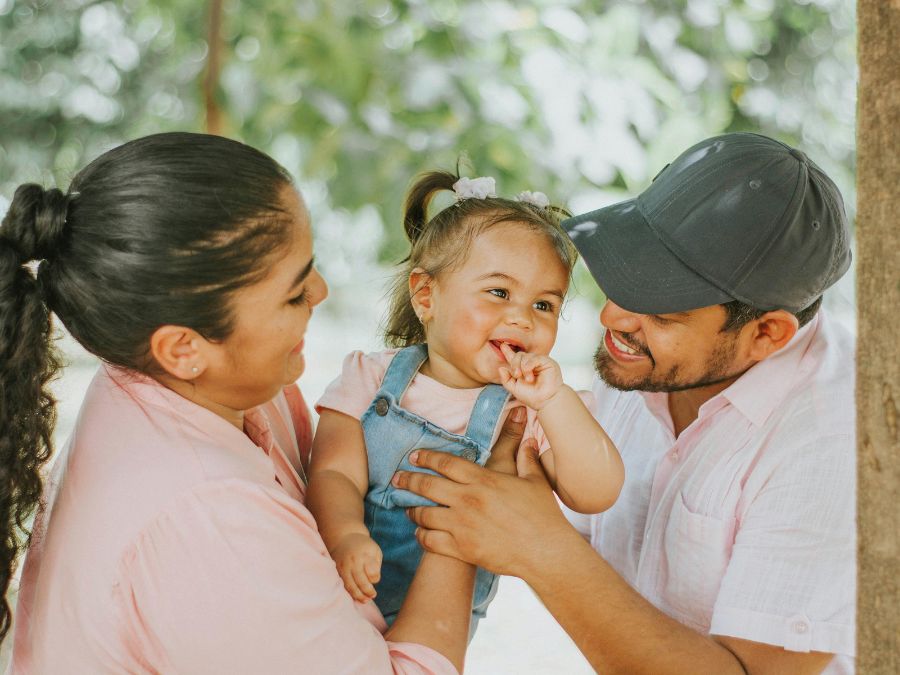
Last week, the HOPE National Resource Center (NRC) wrapped up its Fourth Annual HOPE Summit – the HOPE Transformation. We had over 400 attendees from around the United States and the world including Australia, Chile, and the Netherlands. We deeply appreciate everyone’s support and shared passion for creating a healthier and happier world for all children and families through the HOPE framework and positive childhood experiences (PCEs).
Those who registered for the Summit can still access the platform. Watch recordings of all the Summit events including the keynote addresses, workshops, and the interactive panel discussion.
What’s new at HOPE
In his welcome address, Robert Sege, MD, PHD, Director of the HOPE National Resource Center, shared the growing movement behind the HOPE framework. The HOPE NRC has trained HOPE Facilitators local to 43 states and has led Introduction to HOPE workshops in 39 states, spreading HOPE to a total of 47 states.
This year’s Summit goal and theme – The HOPE Transformation – was to support organizational transformation and the adoption of the HOPE framework. The HOPE NRC has recently launched the HOPE-Informed Organizational Certification program that transitions organizations from talking about broad concepts like trauma-informed care to implementing specific actions to achieve these goals and publicly declaring their intentions and accomplishments. Organizations begin the certification process by assessing their current level of HOPE implementation using the Six Standards of HOPE:
- Bridge to HOPE
- Knowledge of the HOPE framework
- Supporting family strengths and resilience
- Culturally resonant care
- Amplifying the Four Building Blocks of HOPE
- Continuing learning and improvement
Keynote address highlights
The HOPE National Resource Center welcomed Leonard Burton, President of the Center for the Study of Social Policy (CSSP), and Aimee Zeitz-Gruber, MFT, Executive Director of Community Well-Being and Project Director of Partners in Prevention at the YMCA of San Diego County, as this year’s Summit keynote speakers. Both have collaborated with the HOPE NRC since the beginning and have incorporated the HOPE framework in their community and through policy settings.
From gatekeepers to gate-breakers
Your worst moment in life should never define you – Leonard Burton, keynote speaker
Leonard Burton, in his keynote address, challenged us to expand our knowledge of antiracist approach, to reimage early childhood care through antiracist policy and practices, and to identify our role as professionals and organizations to support and affirm parents and caregivers.
“Systems need to take a fundamental shift from gatekeepers – where you have this social control [over marginalized groups] – to gate-breakers and opportunity openers, creating space and opportunities for people to thrive,” said Burton to wide agreement from attendees in the chat box.
One such gate-breaking opportunity was the expansion of the Child Tax Credit (CTC) in 2021 which increased the benefit levels to up to $3,600 per child for most families to help with the costs of raising children. The CTC expansion was an unconditional lifeline for families giving parents and caregivers the freedom and flexibility to meet their children’s needs as the needs changed monthly. “Your worst moment in life should never define you,” he exclaimed. “If you want to advocate for health justice, you need to advocate for economic justice.”
Burton called on everyone, as professionals and organizations in a unique place to support families and communities, to advocate for antiracist supports that give families freedom, flexibility, autonomy, and dignity.
Implementing the HOPE framework from the inside out
We [YMCA of San Diego County] ended up talking about HOPE everywhere we were…They [staff] felt seen and heard and recognized in ways they never thought would happen in a workplace. – Amiee Zeitz-Gruber, keynote speaker
Since 2020, the YMCA of San Diego County has transformed to become a HOPE-Informed community. Keynote speaker Amiee Zeitz-Gruber was first introduced to HOPE from Dr. Sege’s presentation at the 11th Annual Early Childhood Mental Health Conference. Immediately afterward, her team trained to become HOPE Facilitators, and the YMCA organization participated in the inaugural HOPE Innovation Network (HIN) cohort.
The HIN experience motivated them to integrate the HOPE framework into staff training and facilitate communities of practice that gave people opportunities to reflect together about what they were doing with HOPE and the issues coming up from leadership to staff.
“We ended up talking about HOPE everywhere we were [in the implementation process],” shared Zeitz-Gruber. “It helped us understand where there was alignment and where there were questions and even resistance…They [staff] felt seen and heard and recognized in ways they never thought would happen in a workplace.”
In 2023, Dr. Sege and Zeitz-Gruber created a vision with community partners in San Diego to become a HOPE-Informed community. Since then, the YMCA team increased the number of HOPE trainers, is developing a local training of trainers, and will launch the YMCA HOPE Learning and Engagement program.
HOPE work is from the inside out, Zertiz-Gruber concluded. Embracing HOPE requires reflection on the personal level – reconciling our own history, strengths, and challenges.
Workshop highlights
The 2024 HOPE Summit featured 18 interactive workshops over three sessions led by experts in their fields who showcased real examples of how they are practicing the HOPE framework and positive childhood experiences in their own work. Among these incredible workshops were Charlyn Harper Browne, PhD and Cailin O’Connor’s “Redefining Resilience within the Strengthening Families Framework” and Gretchen Pianka, MD’s “Bringing HOPE to Life in Primary Care: Addressing Barriers to Equitable Access for Families.”
When a flower (resilient child) doesn’t bloom, you fix the environment (society), not the flower
Charlyn Harper Browne and Cailin O’Connor introduced an expanded scope of CSSP’s Strengthening Families framework, a set of core values that guide practices to support families in building their protective factors. Many organizations and practitioners use both the Strengthening Families and HOPE frameworks.
“Parents who are strong and supportive in their protective factors [through Strengthening Families] are more able to provide them [children] with positive childhood experiences [through HOPE],” said O’Connor.
In February 2024, CSSP updated the Strengthening Families framework including an updated definition of “resilience” that considers all levels of the social ecology and their factors: societal, community, relationship, and individual.
Research shows that resilience is influenced by different cultural factors that contextualize how resilience is manifested within a group of people. Culture is a cognitive map on how to be. The fact that marginalized groups can and do thrive, shared Harper Browne, speaks to the strength and protective factors they receive in their families and their own cultures. Culture, as such, is a strong foundation for building resilience.
The Building Blocks of HOPE is a dynamic, unique symphony for each family
In her workshop, Gretchen Pianka, MD shared her past struggles as a pediatrician coping with burnout. Feeling exhausted and pressured to get her patients in and out of her care, she needed to change how she ran her practice.
Dr. Pianka founded Resilience University, a program that offers ways for pediatricians to work with families to help them see that unwanted behaviors in children arise from unmanageable feelings and unmet needs. Resilience University translates the research on positive childhood experiences and the Four Building Blocks of HOPE into usable tools and strategies that can be implemented during office visits. This HOPE-informed approach empowers the family to address their unique barriers to PCEs.
“These things [Building Blocks of HOPE] are changing. It’s not a grocery list – it’s a symphony,” explained Dr. Pianka. “And we are helping the family with whatever the symphony of their life is – helping them with the autonomy and self-determination if they need help.”
Panel discussion highlights
The concluding Summit event brought the HOPE National Resource Center leadership team together to answer attendees’ questions about how to implement HOPE for their organizations and communities. We thank everyone for their thoughtful questions, including:
Why wouldn’t your organization want to be HOPE-Informed?
When an attendee asked why an organization would chose to HOPE-Informed Certification, HOPE Director Dr. Sege responded emphatically, “Why wouldn’t they?” There are three reasons why:
- The organization begins with a self-assessment to learn how well they are already doing.
- The organization receives formal recognition from the HOPE National Resource Center on the HOPE-Informed work completed after the self-assessment.
- The organizations will see benefits extending to their staff, clients, and patients. This includes increased job satisfaction and lower turnover rates.
HOPE-Informed Organizational Certification
This Certification reshapes care and service delivery in ways that enable child- and family-serving organizations to better accomplish their missions of improving the lives of the children and families. It is based on the HOPE framework and allows organizations to enhance their families’ experiences of care, increase their relationship with the community, and promote a healthy internal culture within your organization.
Secure small wins, aim for large wins
One attendee wondered what are practical ways to implement HOPE internally even if their leadership is not on board. With the help of keynote speaker Aimee Zeitz, the HOPE NRC created a resource, “HOPE-informed Supervision and Leadership Handout,” to help organizations to create a work culture centered around HOPE.
The HOPE leadership encouraged everyone to take both small and large steps to practice HOPE. What are within your circle of influence? For one organization, it is simply having a cup of coffee ready when a parent first arrives on-site, said Allison Stephens, PhD, former Director of Networks and Policy. It can HOPE-aligned language and practice embedded in staff training and onboarding. How can you be an expert or lobbyist to elected officials in your community who can influence policy change?
HOPE-Informed supervision and leadership handout
During a HOPE Train the Facilitator session, participants noted that leadership and supervisor buy-in of the HOPE framework is key for successful implementation. The HOPE National Resource Center worked with them to create a tool that helps organizations create a culture of HOPE and encourages HOPEful practice with families.
Create your own HOPE story
The HOPE NRC provides resources on many topics and demographics centered around positive childhood experiences. We encourage communities and organizations to make adaption of the HOPE resource that fits their needs and to actively and continuously receive feedback from community members. “Have at it, have fun with it, get people involved [with HOPE],” said Amanda Winn, Director of Training and Technical Assistance.
The HOPE National Resource Center thanks our sponsors, Blue Cross Blue Shield of Massachusetts, Red Sox Foundation, Boston Children’s Hospital, and Point32Health, keynote speakers, and workshop presenters for supporting the Fourth Annual HOPE Summit – The HOPE Transformation. We are proud to work with We & Goliath as the event manager and producer of the 2024 HOPE Summit.




